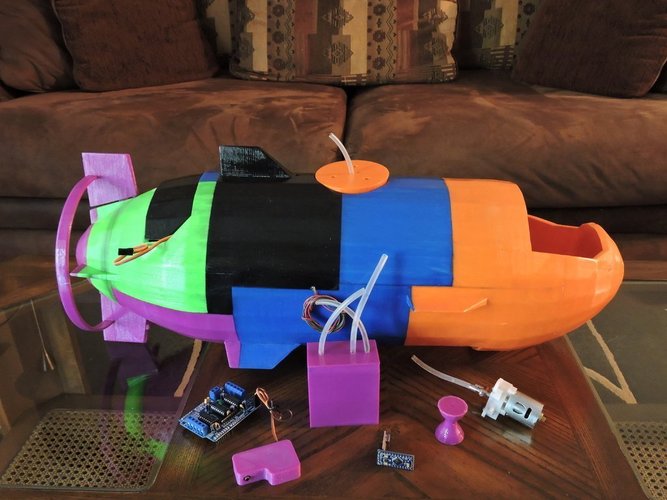
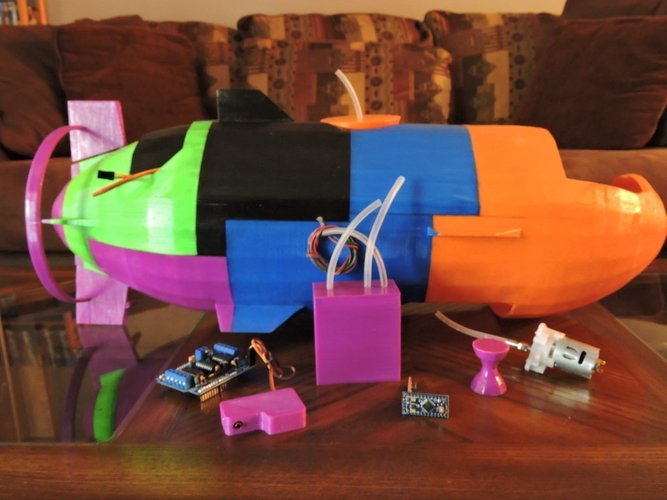
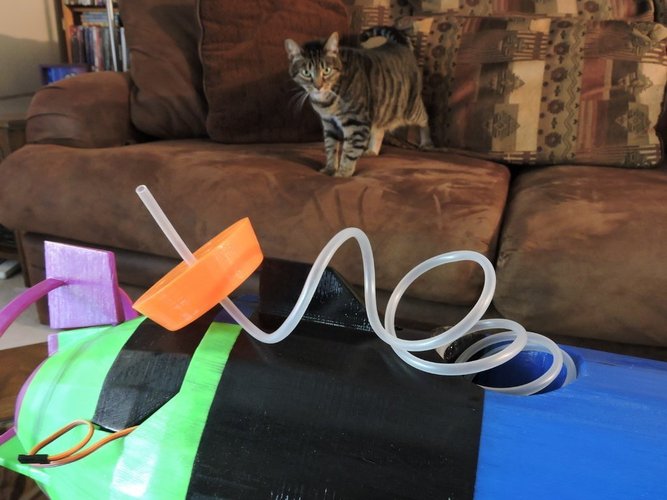
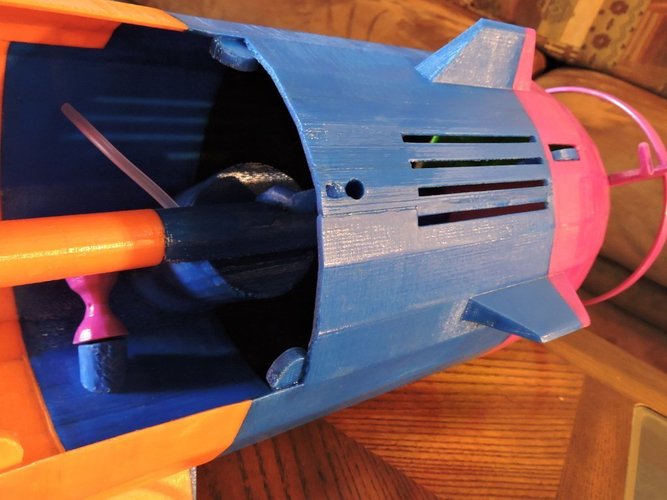
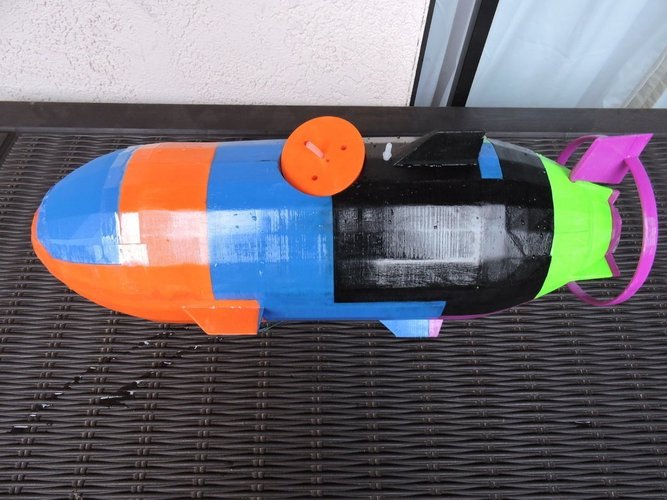
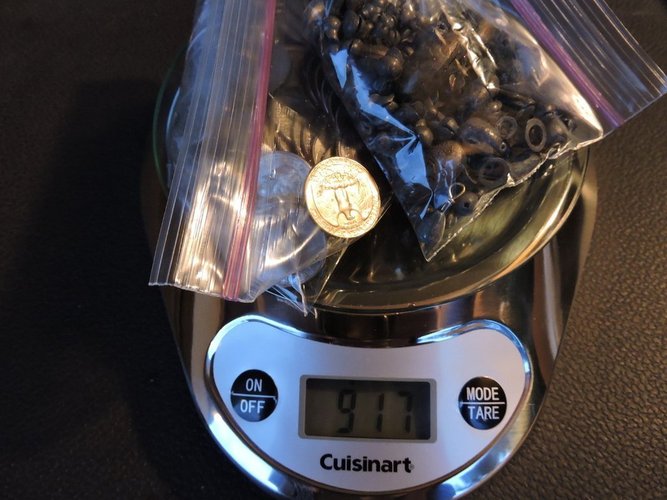
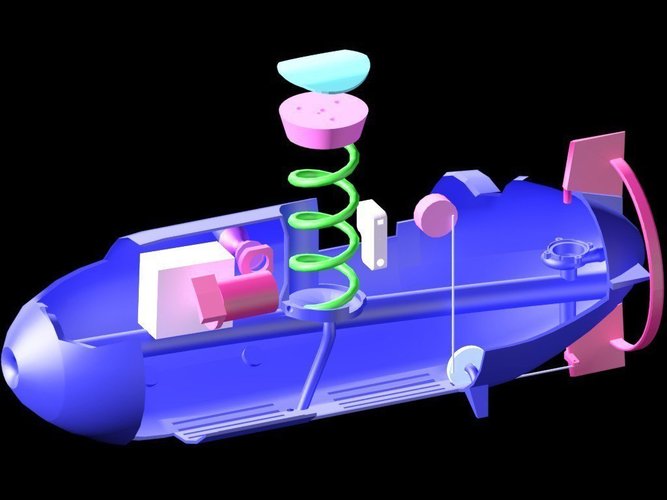
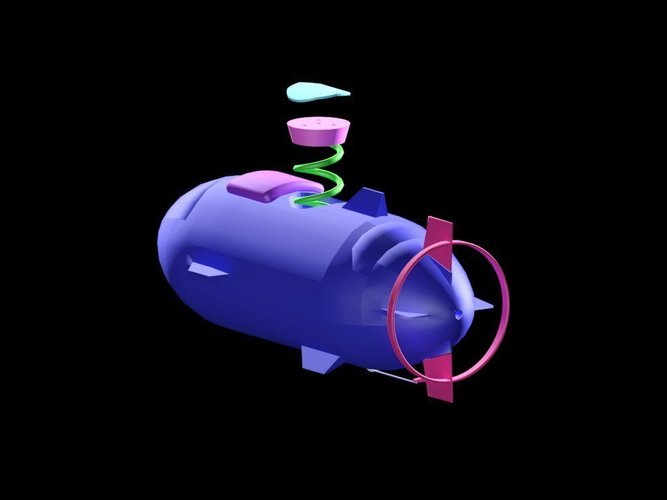

Prints (0)
-
No Prints Yet
Be the first to upload a Print for this Design!
Description
Summary A fully working submarine created for the Thingiverse #MakeItFloat challenge. I'd like to eventually get a fish finder on it and have it map lake beds. Reviews: "a fun, unique design" - Derek Bower "this is an incredible build" - omega-00 3DPrint.com article: http://3dprint.com/81607/3d-printed-mini-submarine/ Inspiration My initial inspiration for this sub came from this boat: http://www.thingiverse.com/thing:272132 I had a fishing trip planned and always wanted a RC boat to play with while out on the lake. I didn’t have the necessary hardware on hand to get the propeller setup going or the time needed to order parts, so I modified the boat to fit this water pump: http://www.thingiverse.com/thing:537649 Here is a newer version of that pump, modified by me: http://www.thingiverse.com/thing:883212 Once out on the lake, I tied some fishing line to it for a tether and attached a hook with some bait to the bottom. It caught a catfish! He was a small little guy and was released back into the lake. While it was a success (it caught a fish!), the boat did have some problems taking on water. Any amount of motion in the water was enough to splash, flood, and sink the thing. The centrifugal pump also needed to be primed to get it pumping, so a future version of the boat would need a second priming pump. To keep the boat from flooding I would need to put a top of some sort on it. A flat top offered little space for electronics and anything decorative would surely need to serve a second purpose housing motors or other parts. At that point I was thinking about just printing out a second boat, flipping it upside down and gluing them together. Well, now it looks like a submarine. I then found the MakeItFloat challenge and decided to go full speed ahead with a more complicated, STEM related project. This project takes science, technology, engineering, and even a bit of math to create a fully working submarine. I’ve learned some things and I hope you will too! Submarines can control their own buoyancy, making them float or sink at will. Archimedes’ principle An object will sink if it weighs more than the water it displaces. An object will float if it weighs less than the water it displaces. Imagine you have an empty soda bottle with the cap screwed on tightly and you took it down to the bottom of a lake and released it. Since the bottle is filled with air, it will quickly float up to the top of the lake with an amount of force equal to the weight of the water that is displaced by the bottle. The amount of weight needed to sink an empty soda bottle (filled with air) = the weight of a soda bottle filled with water. Submarines control their depth by adjusting how much air and water is stored in internal ballast tanks. There are holes in the bottom that are always open to allow water to freely enter and exit. To surface (float), air is pumped into the tank to pressurize it, forcing water out through the bottom. When it is time to submerge (sink), air is released from the tank, allowing water to enter through the bottom to fill up the tank. Submarines pump air into the ballast tanks, but from where? The answer is additional highly pressurized air tanks. I do not recommend mixing highly pressurized gasses and/or liquids with 3D printed parts. An alternate solution that could work is CO2 cartridges. Again, you would want to make sure all parts used are made to the proper specs for that much pressure. I have not found any viable air compressor solution that would be small enough to pressurize metal air tanks inside the submarine while it is at the surface, so I’ve come up with another solution: A float/bobber that sits above the water surface with an air tube running down to the submarine’s internal air pump. We’ll call this the “float deck”. This float deck can also take care of another problem which is wireless communication. Even an inch of water is enough to kill wireless signals and we can use the float to keep the antenna out of the water to maintain a clear line-of-sight. Alternatively, we could limit our wireless communication to only happen when the sub has surfaced, submerging to do autonomous missions offline. Overview: This submarine has 3 pumps, 2 servos, and 1 additional DC motor: Main propulsion (centrifugal) pump http://www.thingiverse.com/thing:883212 Second water pump for priming the first pump http://www.amazon.com/gp/product/B00D82W60O Diaphragm air pump for surfacing http://www.amazon.com/gp/product/B008SNYG9C Rudder servo (left/right direction control) Air valve servo: http://www.thingiverse.com/thing:138112 DC motor for reeling in the float deck (a small motor pulled from a cd-rom drive) The submerge procedure would go like this: Open the air valve to allow air to escape so it can fill up with water. Close the air valve when the desired depth has been reached. The surface procedure would go like this: With the air valve closed, pump air into the sub until it has enough buoyancy to return to the surface. You might also choose to reel in the float deck while surfacing. The air pump will need to overcome the pressure of the water surrounding the submarine to push the water out. The deeper you go, the more pressure there will be. You will need to experiment with how deep you can actually go before the air pump is no longer effective. Go to Instructions to keep reading: http://www.thingiverse.com/thing:920376/#instructions Instructions How much weight will I need? I am printing some parts at 30
Comments